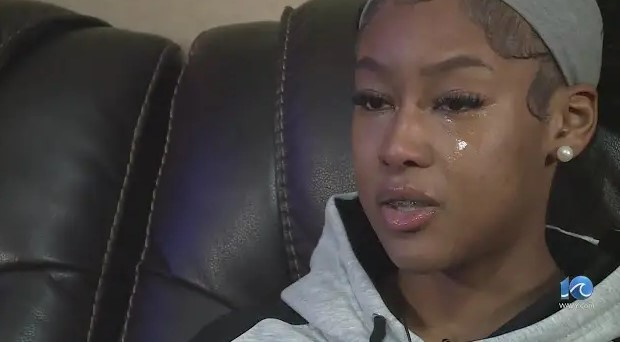A Disputed Event on the Track: The Baton Collision That Rocked High School Sports
High School Relay Race Sparks Controversy After Baton Incident Leaves Athlete Injured
A routine track meet at Liberty University on March 7 took a dramatic and unexpected turn, after a baton mishap during the 4×200 meter relay left Kaelen Tucker, a runner from Brookville High School, severely injured. The incident has since gone viral, with social media users weighing in on whether it was an accident or something more preventable, while raising concerns about athlete safety and accountability in high school sports.
The Incident: A Chain of Unfortunate Events
What was meant to be a standard race quickly became a scene of chaos. During the baton exchange between runners, Alaila Everett of I.C. Norcom High School appeared to lose her balance. In the confusion, the baton veered off its intended path and struck Tucker in the head, causing him to fall to the ground in pain. Spectators were left in shock as the stadium became eerily quiet. Medical personnel immediately rushed to Tucker’s aid, and it became apparent that he was experiencing symptoms consistent with a concussion.
The video footage of the accident quickly surfaced online, capturing the moment and amplifying the growing debate over the event. While some supporters defended the accident as just that—an unfortunate racing mishap—others felt it was a moment of recklessness that could have been avoided. The incident has sparked controversy, with divided opinions on both sides of the issue.
Everett’s Reaction: An Emotional Apology
In the aftermath of the collision, Everett addressed the situation in a tearful interview, expressing deep remorse for what had transpired. She explained that she lost control of the baton during her leg of the relay, which led to the baton hitting Tucker. She expressed that she never intended for the situation to escalate in such a way and that the event was purely accidental.
Despite her emotional apology, the public’s response has been mixed. While some have shown understanding, acknowledging that accidents do happen in high-speed, high-stakes competitions, others are questioning whether this mishap could have been avoided with more preparation or a better understanding of the risks involved in baton exchanges.
Expert Commentary: A Closer Look at the Factors Involved
Track and field analysts have weighed in on the incident, pointing to several critical factors that may have contributed to the collision. One of the most significant issues was the loss of balance by Everett. Track analysts note that in relay races, maintaining stability during the baton exchange is vital, and any loss of control can have serious consequences. Everett’s loss of balance, coupled with the sudden change in direction of the baton, created an environment where a collision was more likely.
Another contributing factor to the incident was the limited space between runners during the exchange. With high-speed racing, especially in short-distance relays like the 4×200 meter, the proximity of runners increases the chances of accidents. In this case, Everett’s instability and Tucker’s position in the race left little room for error.
Finally, the sheer speed of the relay races cannot be underestimated. The relay exchange is a fast-paced event, where every fraction of a second counts. A momentary slip or lapse in coordination can lead to a significant mishap, as seen in this case.
Public Outcry and Potential Legal Consequences
In the wake of the incident, social media platforms have been flooded with conflicting opinions. Some users have demanded disciplinary action, arguing that the incident highlights a failure to uphold safety standards in high school track events. Others have come to Everett’s defense, asserting that the collision was an unavoidable part of the sport and that she should not be blamed for an accident beyond her control.
Meanwhile, Tucker’s family has voiced their frustrations about the lack of immediate support from Everett’s team following the injury. Reports indicate that they are considering legal action, which would bring into question the boundaries of responsibility in high school sports accidents. This raises an important legal and ethical question: when does an accident cross the line into something more serious, requiring legal consequences?
Looking to the Future: Safety Measures and Rule Revisions
In response to the incident, the governing body of high school athletics has launched a formal investigation into the events surrounding the race. One of the central focuses of the investigation is determining whether the safety protocols for relay races need to be reassessed. Officials are exploring ways to improve baton exchange techniques, enhance training for athletes to better anticipate potential accidents, and possibly revise rules to ensure greater safety during high-speed exchanges.
There is also a growing push for clearer guidelines regarding athlete conduct and safety during competitions, with some suggesting that more attention be paid to preventing similar incidents in the future. It is likely that this controversy will serve as a catalyst for changes in high school athletics, particularly in how relays are conducted, and could lead to adjustments in both training and rules designed to minimize the risks of injury.
In the end, while this incident may have been an unfortunate accident, it highlights the unpredictable nature of competitive sports. As athletes and officials continue to review the circumstances, there is hope that this event will result in meaningful changes that prioritize the safety and well-being of all competitors.
